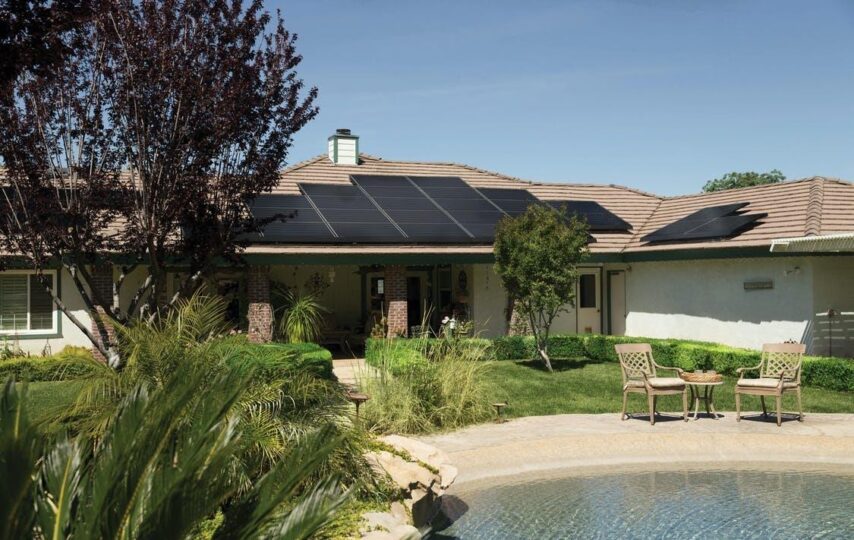Installing San Francisco ca based solar panels in your home can come with a broad range of benefits. Ideally, you need to call on professionals when installing a huge number of solar panels. But, if you plan to install a small number of panels in your home, you can learn the ropes without being a professional.
This guide will show you everything you need to know about installing solar panels in your home. First, you need to determine a few things before you begin. You can also visit https://adorable-home.com/smart-home/12-reasons-to-get-solar-audit-for-your-home-70088 for 12 Reasons to Get a Solar Audit for Your Home.
Things to Know Before you Begin
There are a few factors you need to note before you begin the process of installing solar panels. These factors will determine the number and size of solar panels you should install in your home, along with the solar panel costs. They include:
Your Energy Requirements
Everyone has different power requirements in their homes. Therefore, you need to determine your power needs first. Your power needs are dependent on the appliances and lighting you are planning to power using the panels.
An easy way to determine how much electricity you will need is to check your current monthly energy bills – If you are already connected to an electricity grid.
Sun Hours
As You know, solar panels work with the sun – which means the energy it can generate is dependent on the sun hours in your location. The more hours of sunlight in your location, the more power your solar panels can produce, even if they are not so many. However, if the sun hours in your location are less, installing a higher number of solar panels will be crucial to generate your power needs.
Make sure you determine the number of sun hours in your location before you decide to install solar panels.
Your Home
You will also need to consider your home’s structure and size before you proceed with the installation of solar panels. This will help determine the number of solar panels you can install and where you can place them.
For instance, if you live in a small home with a small rooftop, you may need to install the solar panels on the ground – if you have the space required for it. However, if you live in a large home with ample roof space, then you can place the solar panels on the roof.
Also, the way your roof is designed will influence the possibility of installing panels that will directly face the sunlight. Roofs come in different designs, which is why it is crucial to note the design first. If the design does not allow for it, you may need to install them on the floor.
Once you understand these basics, you can go ahead with the process of installing your solar panels.
Adding Solar Panels to Your Home
Follow the steps below to add solar panels to your home.
Look for the Ideal Location
The first thing to do is look around your property for the best location to install the panels. Like we stated earlier, the design of the room influences the effectiveness of your solar panels. Note that because the sun is hitting a part of your rooftop does not mean it is the ideal spot.
Look through your property thoroughly for the best spot that will allow your solar panels to offer maximum results.
Develop the Platform
You don’t just drop your solar panels on the roof. Instead, you need to set-up a platform or mount for them. You can do this using aluminum or metal rails. To do this, measure the solar panels and construct the system using this measurement. Also, ensure the platform is solid enough so it can handle harsh weather conditions.
Set-up the Panels
After you have developed the platform, the next step is to mount the solar panels. To do this, you will require bolts, brackets, or clamps. These will make certain that the solar panels sit properly on the platform even during harsh weather conditions. You need to exercise caution at this point to avoid damage to your roof.
Wire the Panels
Next, you will need to connect the solar models using a fuse box or junction connectors. Ensure that you insulate the cables properly to ensure there are no accidents or power leaks. After doing this, connect the external wiring with the interior control panels.
The connection will ensure the flow of energy from the solar panels to a charge controller. Them, the charge controller, sends the energy to the batteries for storage. You must be careful during this stage as any errors could cause serious problems later. If you are not a skilled electrician, you may need to reach out to an expert to prevent damages or injuries.
Earth the Mounting System and Panels
Many people tend to forget earthing the mounting system and solar panels. However, this is a very crucial state. Doing this will ensure you or those in your home don’t suffer electric shocks. It also safeguards the solar panels from lightning since this can trigger a power surge which can cause damage too. Lastly, it protects against fire that may stem from the system.
Connect the Electrical Parts Properly
Next, you need to properly connect the electrical parts. This should not be a problem since you should have already made various preparations. Ensure all the connections between the battery, panels, inverter, and solar panels are accurate. As before, make sure this is properly done to prevent problems later. If you cant do it yourself, get the help of an expert.
Try it Out
The next step is to test out your new setup. Make sure you do a final check to make certain everything is in order. The test run stage is to make sure everything is working correctly. If you are satisfied, then you can begin to enjoy the power from your new solar connection.
Conclusion
Solar panels can be a great addition to your home. It can help you save costs and get constant energy needs from the sun. Our simple guide above can help you get started, but if it seems too much for you, reach a professional.








